Inquiry from A. Reist Rutt regarding continuing the outing program following the closure of the Carlisle Indian School.
National Archives and Records Administration
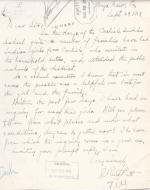
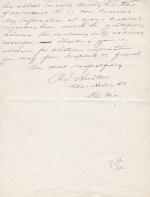
These materials include correspondence regarding an inquiry by R. T. Hunter seeking information about Leroy Fitswal during his time at Carlisle.
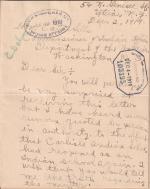
These materials include correspondence regarding an inquiry by Edwin C. Allen about re-enrolling at the Carlisle Indian School after hearing rumors that the School was being reopened.
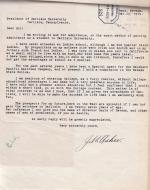
These materials include correspondence regarding a request by J. W. Asher to enter the Carlisle Indian School following its closing.

Personnel file of Oscar Hiram Lipps, who served as Superintendent of the Carlisle Indian School from July 1, 1915 to March 31, 1917. Lipps also was temporarily the Supervisor in Charge of the Carlisle Indian School from February 1914 to June 1915, after Moses Friedman was suspended from duty. Lipps worked in the Department of the Interior for…
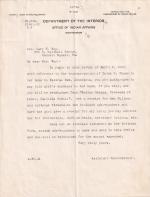
These materials contain correspondence regarding the return of Daisy Chase to her home in Federal Dam, Minnesota following a nursing program in Massachusetts and an outing with Mary E. Way of Kennett Square, Pennsylvania. Way requests funds to cover Chase's travel costs.
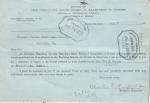
These materials contain correspondence regarding a request by the Maryland State Board of Examiners of Nurses for the course of study pursued by Marie Garlow while she was a student at Carlisle.
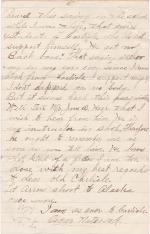
These materials include correspondence regarding an inquiry by Oscar Nateroak for information about whether the Carlisle Arrow is still being published. Nateroak also provides information about Alaska and his own health.
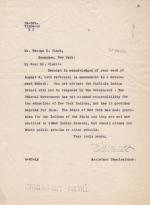
George D. Clark asks the Department of Indian Affairs if the Carlisle Indian School is still in operation, and if it's not, what kind of arrangements he could make with schools in the west. Assistant Commissioner of Indian Affairs E. B. Meritt informs Clark that Carlisle is closed and the Federal Government has no responsibility for educating…
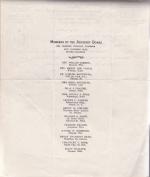
These materials contain correspondence regarding a request from the Society of American Indians for a list of ex-students from Carlisle.
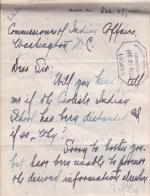
These materials include correspondence regarding a request from Eva Gould Metzger about whether and why the Carlisle Indian School was closed.
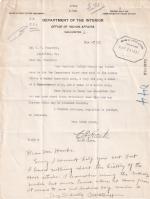
These materials include letters from the Bureau of Indian Affairs to former Carlisle Indian School employees regarding the origins of some artifacts from the school. The artifacts, including a beaded buckskin coat, an old gun, a model of a three-masted ship, and a model of a battleship, could not be positively identified by the employees.
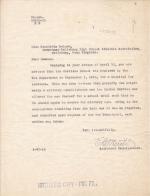
This material includes correspondence between Henrietta Nelson, the secretary of Wellsburg High School's Athletic Association, and E. B. Merritt, the Assistant Commissioner of Indian Affairs concerning the restoration of the Carlisle Indian School to the War Department and its transformation into a War Hospital treating soldiers after its…
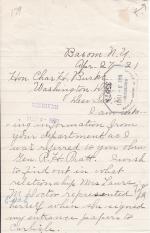
This material includes correspondence between Mrs. Jerry Snyder, nee Daisy Doctor, to the Assistant Commissioner Charles H. Buck regarding her relation to Laura M. Doctor.
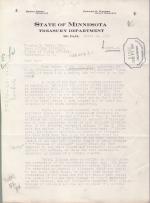
These materials include correspondence and a pamphlet regarding George W. Tibbetts' eligibility for coverage under Minnesota's Soldiers' Bonus Act. Minnesota's Attorney General ruled that, because Tibbetts had initially claimed exemption from drafted military service on the grounds that he was not a citizen of the United States, he was not…
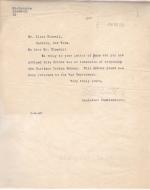
This material includes correspondence between Elias Bissell and Assistant Commissioner E. B. Merritt inquiring as to whether the Carlisle Indian School will be reopened.
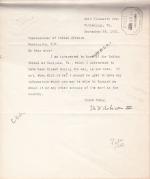
This document contains correspondence between M. W. Acheson and Assistant Commissioner E. B. Merritt. Acheson inquired as to the permanence of the closure of the Carlisle Indian School, and in response Merritt informed him of its definite closure due to the need for the campus at the end of World War I, and listed other Indian Schools that…
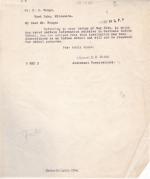
This document contains correspondence between former Carlisle student R. J. Bonga and Assistant Commissioner E. B. Merritt concerning Bonga's desire to enroll students from his area in the closed Carlisle Indian School.
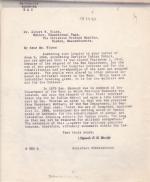
This document contains correspondence between Albert W. Blake, the editor of The Christian Science Monitor, and the Assistant Commissioner E. B. Merritt concerning Blake's interest in a potential continuation of industrial training despite the closure of the Carlisle Indian School.
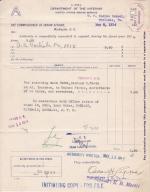
Correspondence and legal documents regarding ownership of the Sanno lot of roughly 4 acres of land, originally purchased for use by the Carlisle Indian School in 1883 by the trustees of the school's charitable fund, under the direction of Richard Henry Pratt, and later conveyed to the government in 1914.
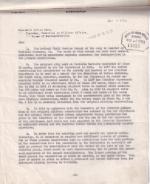
These materials include correspondence and a draft letter to Congress regarding an upcoming bill to transfer the additional land acquired by the Carlisle Indian School during its tenure from the Department of the Interior to the Department of War. Included is a copy of an earlier letter, from 1918, discussing the possibility of such a transfer…
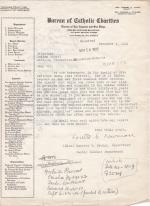
These materials contain correspondence regarding Gertrude Provost's time as a student at Carlisle.
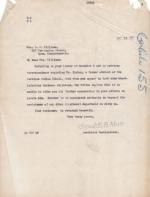
This material includes correspondence between L. J. Williams and Assistant Commissioner E. B. Merritt. Williams had requested help in locating a former student, known only by the surname Bishop, to resolve a business dispute.
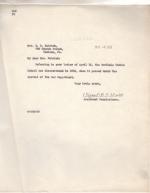
This material includes correspondence between R. D. Hetrick and Assistant Commissioner E. B. Merrit. Hetrick sent a letter concerning carpets for the Carlisle Indian School, and Merritt responded that the school had closed.
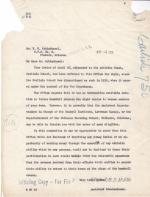
T. H. Schimfessel asks the "Athletic Coach" at the Carlisle Indian School if he knew of any good pitchers because he is organizing an all-Indian baseball team to tour the east coast. Assistant Commissioner of Indian Affairs E. B. Meritt informs Schimfessel that the school closed in 1918 and refers him to the Assistant Superintendent in Charge…
